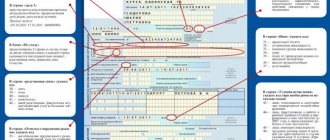Testing knowledge of electrical safety is an event that is mandatory for representatives of a number of specialties. The purpose of the exercise is to ensure safety and prevent the traumatic effects of electricity. Checking is necessary for those employees who will work with electricity.
Question: The company has created a commission to test knowledge in accordance with the Rules for the technical operation of consumer electrical installations. Does this commission have the right to train newly hired employees, assign group II and higher in electrical safety, conduct a knowledge test and make an entry in the certificate? View answer
Who passes the knowledge test
There are a total of 5 tolerance groups in this area. The first group is assigned to personnel not directly related to the maintenance of electrical installations, while their activities are, in one way or another, dependent on electrical appliances.
These personnel are called non-electrical personnel. This includes premises cleaners, accountants and other persons whose work involves reading and entering information onto a PC.
Employees are required to have basic knowledge of electrical safety, including how to provide first aid until emergency services arrive.
List of categories of workers who are assigned electrical safety groups 2 to 4:
- Administrative and technical. These are safety engineers, technologists, and designers related to electronic media.
- Operations and repair personnel. These are electricians who repair electrical installations.
Heads of departments and individual sections should have electrical safety groups no lower than those of their subordinates.
What list of documents is required for organizations working with electrical installations?
Depending on the type of activity of the enterprise, the list of electrical safety documents will differ. For example, an organization engaged in the retail trade of animal feed may not have a single electrical installation on its balance sheet, while a machine-building plant may operate more than a dozen such devices.
Electrical installations are a set of machines, apparatus, lines and auxiliary equipment (together with the structures and premises in which they are installed) intended for the production, transformation, transformation, transmission, distribution of electrical energy and its conversion into another type of energy.
Here is an approximate list of documentation for organizations that have electrical installations on their books and carry out work on them.
- Order on the appointment of the person responsible for electrical equipment and his deputy.
- List of persons entitled to: issue an order, order; to be a permissive, responsible work manager and work producer (observer).
- List of works performed in the order of current operation.
- Order on the procedure for organizing work near a power line.
- A list of special works, the performance of which must be recorded in the certificate, and a list of workers subject to verification for the right to perform special work.
- Order of the head of the enterprise on persons who have the right to individually inspect electrical installations and the electrical parts of process equipment.
- Order of the head of the enterprise on establishing the procedure for storing and issuing keys to electrical installations.
- Journal of issuance and return of keys to electrical installations.
- Order of the person responsible for electrical facilities on the division of responsibilities between electrical and electrical engineering personnel.
- An order (instruction) for the person responsible for the good condition, carrying out periodic tests and inspections of hand-held electrical machines, portable power tools and lamps, auxiliary equipment.
- Journal of inspection and testing of power tools and auxiliary equipment.
- List of protective equipment that must be on site.
- Journal of accounting and maintenance of protective equipment.
- Journal of tests of protective equipment made of dielectric rubber and polymer materials.
- Test reports for protective equipment.
- Order of the consumer's manager on the procedure for filing applications to turn off and turn on electrical equipment.
- Journal of work accounting according to orders and orders.
- Evacuation plan from underground structures in case of unforeseen circumstances.
- Work execution projects (WPP) and technological maps.
- List of technical documentation:
- a copy of the master plan with buildings, structures and underground electrical communications shown;
- approved design documentation (drawings, explanatory notes, etc.) with all subsequent changes;
- acts of acceptance of hidden work, testing and adjustment of electrical equipment, acceptance of electrical installations into operation;
- executive working diagrams of primary and secondary electrical connections;
- acts of delineation of networks according to property (balance sheet) ownership and operational responsibility between the energy supply organization and the consumer, as well as between structural divisions (if necessary);
- technical passports of main electrical equipment, buildings and structures of power facilities, certificates for equipment and materials subject to mandatory certification;
- production instructions for the operation of electrical installations;
- electrical equipment log books;
- drawings of electrical equipment, electrical installations and structures, sets of drawings of spare parts, as-built drawings of overhead and cable routes and cable logs;
- drawings of underground cable routes and grounding devices with references to buildings and permanent structures and indicating the installation locations of couplings and intersections with other communications;
- general power supply diagrams compiled for the consumer as a whole and for individual workshops and areas (divisions);
- list of electrical installations under operational management;
- list of inventory protective equipment distributed between objects.
Types of electrical safety knowledge tests
Electrical safety knowledge is divided into the following types:
- Primary. If an employee has re-entered work, then he cannot be allowed to perform tasks independently, since he does not know the technical process. If the break in work is more than three years, then you will need to undergo training again.
- The next one. After the expiration date, the knowledge test must be carried out again. The order of priority is established by rules depending on the categories of workers.
- Extraordinary. When changing the sequence of technological operations; the introduction of new rules, instructions, as well as after changes to existing ones; upgrading obsolete equipment or purchasing new equipment; at the request of inspectors, including representatives of Rostechnadzor; in case of violation of OT requirements; Based on the results of the commissions’ conclusions and other changes, an unscheduled test of employees’ knowledge is carried out.
Safety requirements
Based on current requirements, the following devices must be grounded:
- Housings of machines, lighting devices and transformers;
- Devices and drives operating on electricity;
- Shield frames and their parts with a constant voltage of more than 42V;
- Metal structures and mobile electrical receivers;
- Equipment located on mobile vehicles.
Order on the creation of a commission to test knowledge of electrical safety
Devices are grounded for the purpose of electrical safety of employees at the enterprise and for the safety of the equipment itself.
If the equipment initially does not assume voltage, but becomes so due to broken insulation, it also needs to be reliably grounded. In this case, the ground is not taken as a wire with a zero or working value.
Important! It is necessary to check the functionality of the grounding at least once a year using special tools. If any repair or installation work is performed on the network, a re-check is required.
To achieve optimal safety as required by law, the following electrical safety rules must be adhered to:
- When switching on equipment that produces or uses electricity, a device ensuring electrical safety must be started at the same time;
- Live equipment must be protected from accidental contact;
- The control elements of the device with which contact is intended must not be live, even if their insulation is broken. We are talking about various buttons, levers, handles and so on;
- If the device is equipped with a cord for supplying electricity, the attachment point must be strong and stable, not fray or take on additional stress;
- In the case of current having variable values, the lighting should be supplied at a voltage no higher than 380V;
- For local lighting, lamps with a voltage of no more than 220V should be used. If the room does not imply increased danger, then this value is used for any lighting device, no matter where and at what height it is installed;
- Each switchboard must have detailed inscriptions on its housing. They require the display of a license plate, an indication of the device and the current used;
- Doors in rooms with electrical installations must be closed;
- In order to replace light bulbs or carry out a complete cleaning of the room, it is necessary to completely turn off the voltage;
- When working with equipment, follow the requirements of regulatory documentation. For example, when choosing technical devices and protective equipment, the strength of the current passing through the human body, the touch voltage and how long the current flows are taken into account. If the electrical installation has a voltage of more than 1000V, an employee with electrical safety group 4 is allowed to access it. Group 3 allows servicing installations with voltages up to 1000V;
- Use personal protective equipment, which can be basic or additional. The main ones are those that can withstand the operating voltage of the device. Using such means, it is allowed to work with live parts. Speaking of tools, we are talking about insulating clamps, voltage indicators, dielectric gloves and special assembly tools. Additional means of protection are auxiliary to the main ones. These are various stands, galoshes, gloves, and so on;
Individual protection means
- If high voltage is present, distance is used as protection. If the voltage is not higher than 1000V, then the safe distance to overhead lines from the installations is 0.6 meters. In other cases, there is no specific regulation, the main thing is that there is no touching;
- Step voltage is dangerous up to 20 meters from the point where the conductor contacts the ground. If you happen to get into such a zone, it is recommended to leave it with a “sliding step”, that is, without lifting your feet from the ground;
- It is necessary to use power tools that are capable of operating at safe voltages. When finding out the safe voltage, the following are taken into account: the human resistance indicator (for calculations - 1000 Ohms), the concept that a safe current is the one at which you can independently “break away” from the installation under voltage;
- To increase resistance, it is necessary to insulate live parts and tool handles. The insulating layer wears out over time during the operation of electrical installations and loses its protective properties. The quality of insulation should be monitored at least once every 3 years using a special device - a megohmmeter;
- The enterprise must provide a protective shutdown no more than 0.2 seconds after equipment damage or power failure;
- Remember that, thanks to the electrical separation of the network, it is possible to increase the resistance in individual sections;
- The use of fencing devices, which are allowed solid or mesh, is mandatory. The main requirement for them is fire resistance;
- If unauthorized entry into the fence occurs, an automatic lock should operate, the task of which is to relieve tension;
- The enterprise must be equipped with light, sound and other alarm systems;
- Organizational measures are required, that is, training, instructions, medical examinations, etc.;
- It is important to use technical means of protection against current. We are talking about protective grounding and grounding;
- Sockets and conductors installed in work areas must be in good condition.
Important! In rooms where electrical installations are operating, employees should wear head protection - helmets.
What electrical safety rules prohibit:
- Use sockets or other devices that are significantly damaged;
- Use damaged cables and wiring that contain voltage that have lost their insulating properties;
- Use electrical wiring for purposes other than its intended purpose (for example, hanging lamps on it);
- Use paper as an insulating material. Leaving things on levers, dashboards, etc.;
- Wrap lamps in flammable materials;
- Use television and radio wiring;
- Allow operation of equipment that does not require repair;
- Clean rooms with voltage-bearing devices.
Frequency of testing knowledge on electrical safety
As noted earlier, verification is divided mainly into regular and primary.
Deadlines for recertification:
- If an employee returns to the workplace, he must be certified within a month.
- If there was a break in work, then after three years the time comes for certification again.
- Once a year, employees involved in repairs or servicing electrical consumers are recertified.
- Administrative and technical personnel undergo inspection every three years.
If an extraordinary certification is required, an additional commission meets and conducts a knowledge test.
Procedure for testing knowledge
The organization of work at the enterprise to test the knowledge of employees is carried out as follows:
- At enterprises, an administrative document is issued, which stipulates all the nuances of the inspection, and the document must comply with the requirements of the rules.
- If necessary, training is organized (during initial certification).
- Time for preparation is provided according to the developed tickets.
- Exams are accepted by a commission at the enterprise.
- Based on the results of the inspection, a protocol is drawn up, in one of the columns of which it is written whether the tests were passed or failed.
- If the knowledge test passes with a positive mark, then the information is entered into the certificates.
Then you can work as intended.
If the exams are not passed, then additional time is assigned for retraining, and the commission meets again to accept tests. If the exams are not passed, the question of suitability for the position may be decided again. Programs and tickets must be developed in advance and approved by the head of the training center. The form of the protocol is also developed separately and approved by the regulatory act of the association.
Rights and obligations of the commission
Approved qualified specialists establish the level of knowledge of hired employees.
Work is determined exclusively on an individual basis:
- Members of the examination group initially form a list of questions that will be asked during testing, referring to their position and work experience.
- The current level of knowledge in the area under consideration is checked. The chairman or his deputy must be present during testing - according to the management, they can conduct testing together.
- Assignment of an electrical safety group based on the results of the passed exam. Based on the results, a decision is made whether to assign a group or not.
- Issuance of a confirmation certificate.
Certificate confirming successful passing of the test
The results of the testing must be recorded in a specially developed internal Protocol. In the event of an unsatisfactory assessment, data about this must also be recorded in the document. As a rule, this entails a retake within the established time frame - until this point the permit is not issued, otherwise the employer will be subject to administrative liability in the form of a fine.
Creation of an attestation commission
At enterprises where it is required to test knowledge in the field of electrical safety, a certification commission is created or contracts are concluded with a third-party organization that has the right to conduct certification.
The composition of the commission is determined by order of the enterprise; the commission includes:
- Chief Power Engineer. This is an official who has the highest electrical safety group. Group can be 4 if the facility operates technical devices with voltages up to 1000 V, and also 5 - if the voltage of power equipment is over 5000 V.
- Deputy managers or chief engineer, safety engineer, these categories of employees are required to have at least 4 access group.
- Heads of facilities in this division.
What are the requirements for commission members:
- electrical safety certification must not be expired;
- it is necessary to be certified at Rostechnadzor or with a representative of this organization directly at the enterprise;
- You must have identification on hand.
The commission is created from an odd number of members; this requirement must be fulfilled, since when resolving controversial issues, voting will be required and this is how it can be determined whether the employee is certified or not.
The organization independently chooses who specifically to include in the Certification Commission (AC).
What is electrical safety
Here it is necessary to understand that the concept itself includes various measures and nuances:
- Safe operation of electrical installations is organized;
- Availability of technical methods and means of protection against electric shock;
- Events are organized to make working with electrical installations safer;
- Availability of technical measures to ensure safe operation during stress relief;
- Familiarization with the protective equipment used in installations powered by electricity;
- Lightning protection of structures and buildings is provided. The volume and complexity of work may vary, so each company creates an energy service and staffs it with qualified personnel in the required number.
Note! It is allowed to start using electrical installations only after receiving a special agreement from a specialized organization that has the appropriate license.
What should the consumer do:
- Maintain electrical installations in working order and use them in accordance with the requirements of regulatory documents on electrical safety, safety rules, etc.;
- Conduct quality and timely maintenance, scheduled preventive maintenance, testing, improvement and reconstruction of installations;
- Select electrical and electrical engineering personnel, conduct, if necessary, medical examinations of workers, briefings on labor protection and fire safety;
- Ensure reliable and safe operation of electrical installations;
- Protect the environment;
- Take into account, analyze and investigate violations in the operation of equipment, as well as accidents, take measures to identify and eliminate the causes of their occurrence;
- Provide reports to specialized authorities if an accident or a serious group accident involving the use of electrical installations occurs during work;
- Develop job and production instructions necessary for electrical personnel;
- Equip equipment with protective equipment, fire extinguishing systems and other tools;
- Take into account and rationally use electricity, as well as carry out energy saving measures;
- Conduct necessary equipment tests. Make sure that lightning protection, measuring instruments and means that take into account energy consumption are working properly;
- Comply with the instructions of government authorities providing energy supervision.
Requirements for employees to be tested
What are the requirements for a manager?
- The electrical safety group must correspond to the voltage consumed.
- An official who is entrusted with responsibility for electrical equipment is appointed to the position of chairman.
- The inspection group must not be lower than that of the employee being certified.
The following requirements apply to examiners:
- Mandatory certification in the territorial division of Rostechnadzor. It is allowed for two employees to undergo a knowledge test at the state energy supervision, and all the rest at the enterprise itself.
- If the structure of the organization is large enough, then such commissions are created at each facility. This makes it more convenient to work and carry out checks.
- The AC may include representatives of supervisory authorities; they are included by agreement.
- If the enterprise employs a small number of employees, then it is enough to take exams directly at Rostechnadzor, and the creation of commissions will not be advisable.
What is included in testing
A test to test knowledge of the rules of work in electrical installations of group lll on electrical safety
During testing, employees are tested for the following knowledge:
- Purpose and principle of operation of power plants and their components;
- Awareness of the danger of injury due to non-compliance with safety precautions when working on electrical networks, knowledge of life-threatening sectors on devices and units connected to power;
- Knowledge of techniques for providing first aid to victims of electric shock or burns. This course includes the study of the processes of the influence of electricity on a living organism, the stages of shock and possible options for removing a person from this state.
Sample test question
During testing, some employees from among the service and administrative personnel are also tested for knowledge of the organization of the work process, industrial safety requirements, as well as other narrowly focused data that an employee performing any function must have.
Test results
If the check is carried out, its results must be recorded. This will be a kind of report on the work done.
For this purpose, a protocol is provided that reflects the following information:
- full name of the enterprise where the exams were taken;
- what is the name of the document and its serial number;
- where and when the knowledge test was conducted (for example, in the meeting room, at 14.00);
- information about officials who are members of the AC;
- information about employees who need to undergo certification;
- what inspection results are noted;
- conclusion determined by commission.
The protocol is signed by the commission members and approved by the chairman, after which certificates are issued based on this document.










